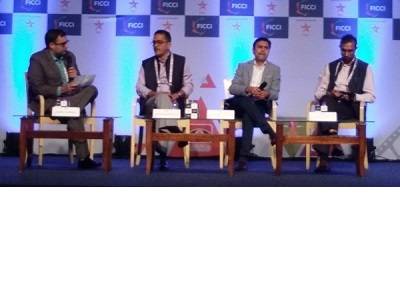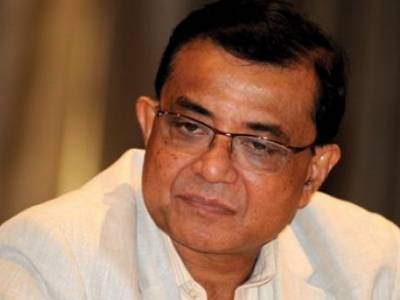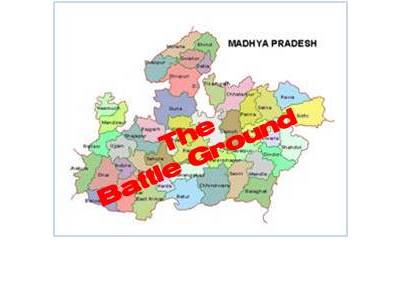Bogged down by newsprint costs, print looks to stay buoyant with ad rate, cover price hike
Newsprint prices have been steadily going up for some time now and since last year, it has escalated by 40 per cent. The price hike has been led by China’s decision to ban imports of 24 types of rubbish as part of a campaign against “foreign garbage” and environmental pollution, including unsorted scrap paper. With this, the Indian print industry is gearing up for an increase in the prices of pulp and paper in the coming months.
An industry veteran warned, “The print industry is in great trouble because of the newsprint rate hike and a lot of other issues which are plaguing at this point of time. It maybe sometime before the industry sees a positive growth.”
Shedding more light on this issue, Mitrajit Bhattacharya, President and Publisher, Chitralekha Group, said, “It’s a very serious issue and we are monitoring it.” He added that the impact would be seen partly in April-June, mostly from the next quarter onwards.
Sanjeev Kotnala, Intradia World Brand and Marketing Advisor Innovation Coach and Facilitator, remarked that since newsprint is a large part of newspaper costs, any upward spiral is naturally going to disturb the already stressed margins and the existing ecosystem. “You will see the demonstration of classic flight, freeze or fight strategy by individual publishers. The reaction will be basis their conviction, strength, brand acceptance, loyalty, relationships and perception among the advertisers and agencies,” he added.
Kotnala also felt that a collective correction in subscription prices was long overdue. According to him, “Lack of collective action and distrust among the publishers has kept it on perpetual hold. There will come a time when it will no longer be possible to absorb this tectonic pressure by manipulating paper size, pages, paper quality and advertising rate restructuring. The subscription price will have to give in. This is that time.”
On the other hand, while Bhattacharya maintained that they did not want to increase the prices yet, he felt that it was too early to comment on the increase in the advertising pie for print post the recent release of IRS 2017 data, which had showed positive growth for the print industry.
While agreeing that there has a been hike in inputs and newsprint prices in recent times, mostly on imported newsprint, AS Raghunath, an Independent Print Media Marketing and Advertising Professional, pointed out that, “Newsprint cost adds up to about 60-65 per cent of our input costs and any hike surely erodes the bottom line.”
He added, “The newsprint price hike would affect English dailies, too, which depend more on imported newsprint. To balance their expense sheets, English publications too would have to either increase their subscription price or enhance the ad-tariff.”
Here, Kotnala remarked, “A cover price correction may temporarily affect the newspaper circulation and make the fringe readers drop off the audience radar. But it will be beneficial in the long run. As a 0.25 to 0.5 paisa per copy may not be enough correction if prices keep shifting northwards, a collective call is the need of the hour. A reader today is accustomed to price increase across categories. He may be more willing to accept this correction in an otherwise stable cover charge, at least for the language newspapers.”
Kotnala also called for the print industry to keep its ego aside and act in good faith as far as the collective subscription rate correction is concerned. Without mincing words, he stressed, “It is also time for individual publishers to do much-required introspection. They may need advanced research beyond the quantitative count, and qualitative hurriedly arranged groups, which are only useful for a no-negative check and validation of pre-defined management decisions. Now, is almost the last phase where publications can still dream and attempt to make print again aspirational, desired, credible, analytical, solidly informative.”
Priti Murthy, CEO, OMD India, remarked that the cover price is sensitive to market demand and sourcing of newsprint and felt that this is a positive time for publishing. At the same time, she noted that with digital content growing in local languages, there needs to be a well thought-out strategy behind any increase in cover prices.
Impact on ad rates
“As prices for every product goes up with the inflation, even advertising tariffs’ hike around April-June is normal for most newspapers,” remarked AS Raghunath. “Those with increased readership or circulation numbers would daringly do it justify their numbers as well as the inflation. While others would do it too in renegotiating their deal rates,” he noted.
Murthy, too, felt that the newsprint price hike would impact the input cost for publishers and added that it remained to be seen what the measures they would take to keep their businesses profitable. “If the burden is passed on to the advertisers with an increase in ad rates, it could impact the ad spends as advertisers may choose to evaluate other options,” she pointed out.
Meanwhile, Kotnala affirmed that IRS or no IRS, advertising in newspapers was under pressure. Unlike in the past, there is no headroom for ad rate correction even for the more prominent publications. On a cautionary note, he added, “A print cost cess (experimented in the past) will boomerang today. On the other side, digitalisation, new generation’s apathy towards print in general, the inability to monetise digital avatars, disrespect for journalism or lack of perceived value-add by print in general, is putting newspapers in a tight spot.”
Meanwhile, AS Raghunath pointed out that the IRS data was released at a time when there was hardly any intense advertising season. And during this time, MRUC kept updating their IRS numbers through a number of installments till March 12, 2017. One would say just a week before the complete IRS package was out.
For OMD India’s Murthy, with the IRS data released only in February this year, it was too soon to tell whether the advertising ped had increased for print. Nevertheless, print has had a significant share of the ad pie, with the growth of vernacular newspapers. “Hence, we have to view it from the perspective of regional versus national players. It is also an important part of the media mix for categories like Auto, Tech and Retail, as well as new categories, such as social media, etc.,” she added.
On a more positive note, Raghunath observed, “The post-February period has seen the usual ad spends for Holi and Navratri across all the publications, regardless of whether the numbers for the publications were good or bad. And in the recent weeks, especially during Navratri, there were some heightened advertising activities by the automobile categories. With the commencement of the education season, spends from this category has also been on the rise in the recent weeks. And for the English publications, we have seen better inflow of volume through IPOs and other financial advertising, which wasn’t there much during several months.”
He concluded by saying that he was hoping for most newspapers to close the year on a satisfactory note.





















Share
Facebook
YouTube
Tweet
Twitter
LinkedIn